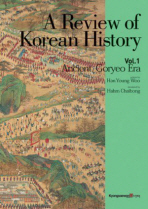 저자
저자
박이문(저자) HAHM CHAIBONG(역자) 젤다 마를린 조간치(삽화가)
 저자소개
저자소개
저자 한영우
서울대학교 문리과대학 사학과 졸업, 서울대학교 석사·박사, 서울대학교 한국문화연구소장, 미국 하버드대학 객원교수, 한국사연구회 회장, 서울대학교 규장각 관장, 서울대학교 인문대학장, 한림대 특임교수, 현 이화여대 석좌교수, 서울대 명예교수, 문화재위원회 사적분과위원장
주요저서: 정도전 사상연구(1973), 조선전기 사학사 연구(1981), 개정판 정도전 사상의 연구(1983), 조선전기 사회경제 연구(1983), 조선전기 사회사상 연구(1983), 한국의 문화전통(1988), 조선후기 사학사 연구(1989), 우리역사와의 대화(1991), 한국민족주의 역사학(1994), 조선시대 신분사 연구(1997), 미래를 위한 역사의식(1997), 정조의 화성행차, 그 8일(1998), 왕조의 설계자 정도전(1999), 우리 옛지도와 그 아름다움(1999), 명성황후와 대한제국(2001), 역사학의 역사(2002), 창덕궁과 창경궁(2003), 조선왕조 의궤(2005), 역사를 아는 힘(2005), 21세기 한국학 어떻게 할 것인가(2005; 공저), 대한제국은 근대국가인가(2006; 공저), 조선의 집 동궐에 들다(2006), 명성황후, 제국을 일으키다(2006), 실학의 선구자 이수광(2007), 다시 실학이란 무엇인가(2007), 반차도로 따라가는 정조의 화성행차(2007), 동궐도(2007), 꿈과 반역의 실학자 유수원(2007), 조선 수성기 제갈량 양성지(2008), 문화정치의 산실 규장각(2008)
역자 함재봉
미국 카를턴대학 정치학 학사, 미국 존스홉킨스대학교대학원 정치학 박사, 연세대 사회과학대 정치외교학과 조교수, 대통령자문 정책기획위원회 위원, 전통과현대 편집주간, 연세대 동서문제연구원 비교문화연구센터 소장, 연세대 사회과학대 정치외교학과 부교수, 연세대 사회과학대 정치외교학과 교수, UNESCO 본부 사회과학국 국장(Division of Social Sciences Research & Policy Director), 한국국제정치학회 회원, 미국 랜드연구소 선임연구원
주요저서: 탈근대와 유교-한국정치담론의 모색(1998), 아시아적 가치(공저, 1999), 유교 민주주의.왜&어떻게,전통과현대(2000), 한국의 보수를 논한다(공저, 2005)
역자 이동진
서울대학교 법과대학 법학과 졸업, 하바드대학교 국제문제연구소 연구원(Fellow), 제2회 법대 재학중 외무고시 합격, 국방대학원 안보과정수료, 주나이지리아 대사, 외교통상부 본부대사, 현 출판사 해누리기획 대표 겸 월간 착한이웃 발행인 및 요셉의원후원위원
주요저서: 韓의 숲, 신들린 세월 등 시집 22권, Agony with Pride 등 영어시집 4권, 외교관 등 장편소설 5권, 장미의 이름으로, 반지전쟁 등 번역서 80여 권, 한글을 영역한 시집 8권(이해인, 홍윤숙 시집, 석용산, 이동진 시선집 등 )








